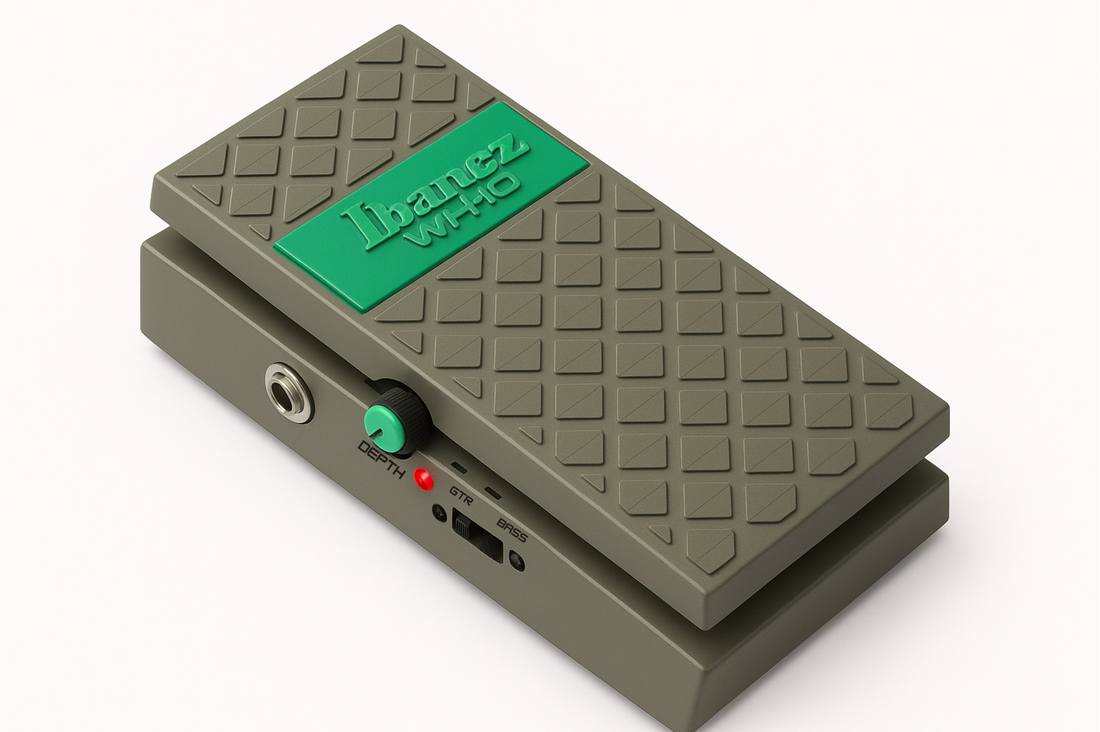
The Ibanez WH-10v1
Share
When talking about iconic wah pedals, most guitarists name the Cry Baby or Vox wahs—but for a certain breed of tone chasers, the Ibanez WH-10v1 stands in a league of its own. First released in 1987, the WH-10v1 was an unusual wah from the start: a plastic enclosure, a quirky frequency sweep, and an active circuit that set it apart. Once dismissed by tone purists, it’s now a sought-after vintage gem—thanks in large part to one particular artist...
The First WH-10
The WH-10v1 debuted in the late 1980s during a period when Ibanez was experimenting heavily with pedal design. Instead of following the established path set by the likes of Dunlop or Vox, Ibanez opted for innovation. The WH-10 was one of the first active wah pedals, meaning it included a preamp to boost the signal—especially helpful when switching between clean and overdriven tones.
The original production ran until the early 1990s and was then discontinued, partly due to underwhelming sales and partly due to the fragility of its grey plastic enclosure, which wasn’t built for the rigors of the road. But in the years since, it has become a cult favorite.
John Frusciante
The pedal’s reputation skyrocketed thanks to John Frusciante of the Red Hot Chili Peppers, who used it extensively on albums like Blood Sugar Sex Magik and Californication. His expressive, vocal-like wah tones on tracks like “Dani California” and “Sir Psycho Sexy” helped make the WH-10 a legend.
Frusciante valued the WH-10 for its pronounced midrange, wide frequency sweep, and unique tone coloration—all of which helped his playing stand out. Once word got out that his sound was tied to this elusive pedal, demand surged.
Key Features
The WH-10 is different from most wahs. First of all, it has active circuitry. This means it includes a built-in buffer and a boost circuit, which provide a stronger output and work especially well with high-gain setups.
As shown in the image, the WH-10 includes a switch that allows you to choose between Guitar and Bass modes. This feature makes it one of the few wahs designed for both instruments. The Bass mode provides a broader sweep and better low-end retention.
Another key feature is the Depth control. With this knob, you can adjust the intensity of the sweep to control the wah’s presence in your signal.
V1, V2, V3
There are a few notable differences between the versions Ibanez has made. The v1 made its debut in the late ’80s, using a plastic housing and delivering a distinctive tone. In 2009, Ibanez brought back the WH-10 with the v2—now with a sturdier metal housing. While the basics of the circuit remained, the use of different components resulted in a slightly different tone. Some users also report variations in sweep and response feel.
The v3 entered the market in 2021, aiming to more closely emulate the v1’s tone than the v2 did. It also introduced the option to switch between true bypass and buffered mode.
A Classic
The Ibanez WH-10v1 is more than a quirky footnote in pedal history—it’s a tonal icon with a loyal following. Whether you’re chasing Frusciante’s expressive funk tones or just want a wah that stands apart from the crowd, the v1 delivers a sonic character that’s hard to replicate. While the v2 and v3 versions are solid and roadworthy, many purists still hunt down the original for its unmistakable vibe.
